Introduction
Our understanding of the universe relies on the existence of unknown forms of energy and matter. They are supposed to represent 70% of the energy and a bit more than 25% of the mass budget of the current universe. Since favoured models could not be confirmed by various particle measurements the search for new field concepts is a big topic of modern research.
One option are energy models that can be retained in canonical and non-canonical scalar fields, which are called chameleon or symmetron fields due to their specific properties. Forces connected to these energy fields can in vacuum and with small densities cause a measurable effect. Next to torsion balances the search for these fields can also benefit from sensors based on matter-wave interferometry.
Atom Chip
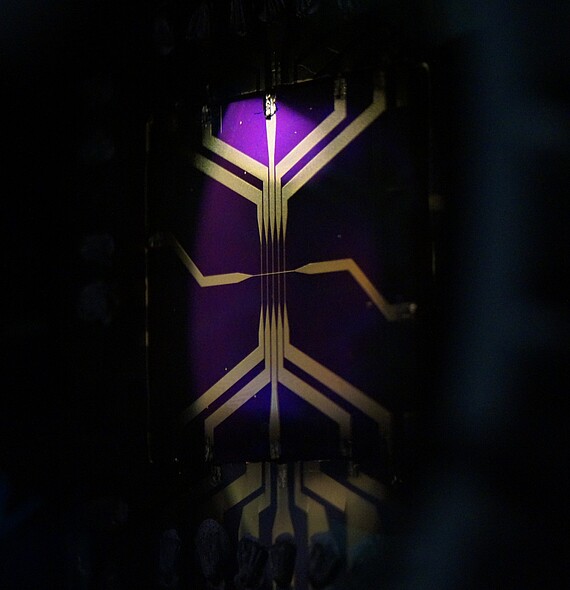
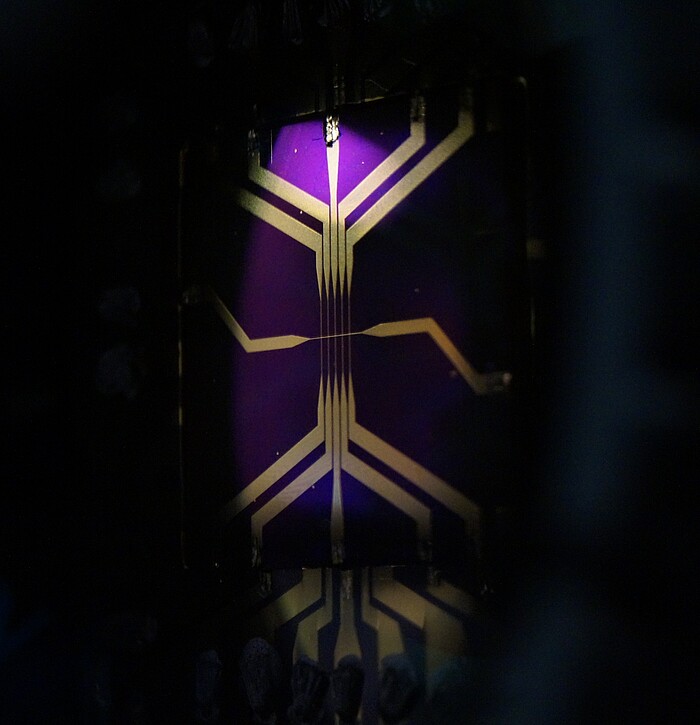
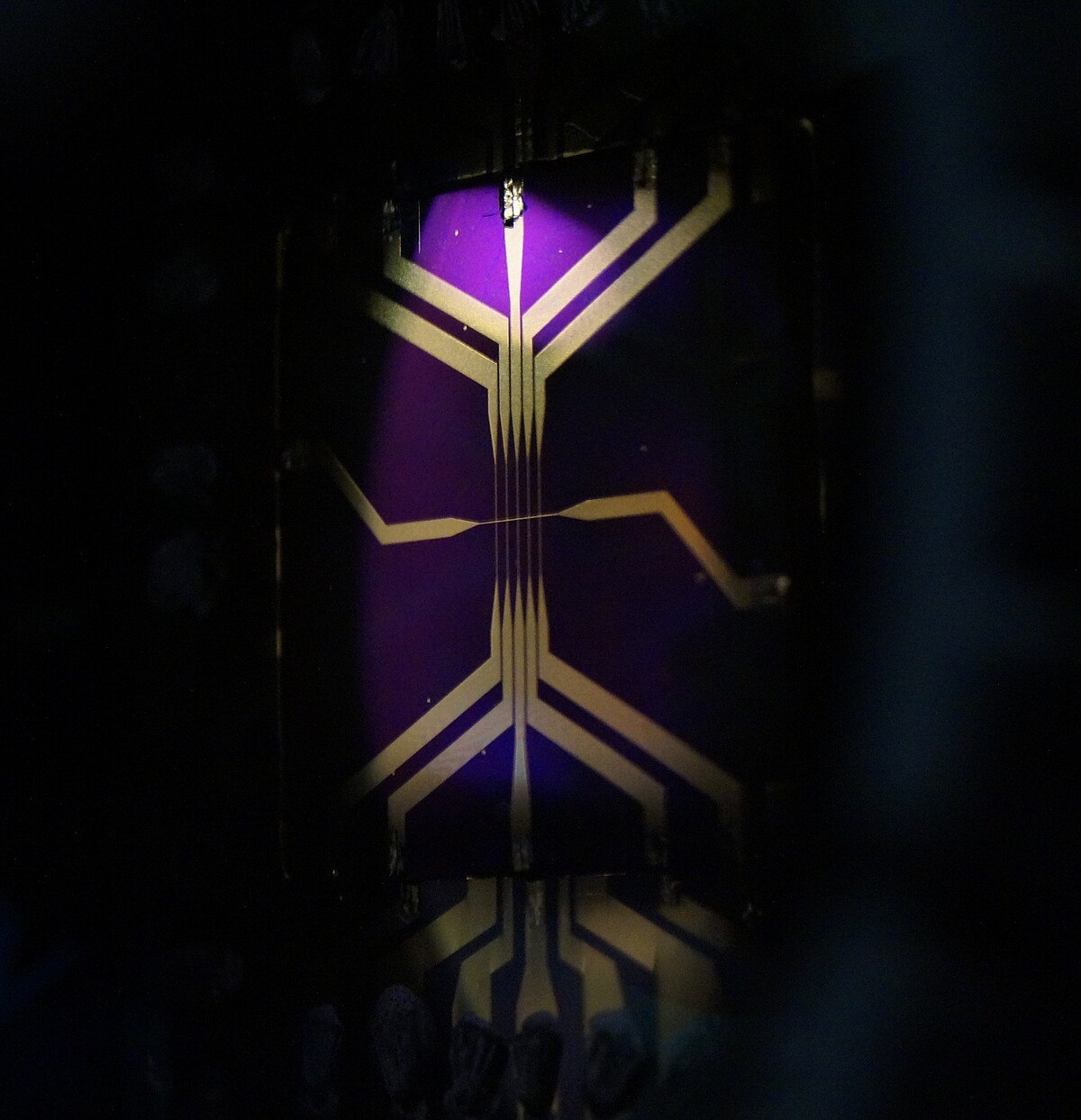
The current carrying structures of the topmost chip substrate are visible. They are used to create various magnetic field configurations for the manipulation of the atomic ensembles.
DESIRE - Dark Energy Search by Interferometry in the Einstein-Elevator
Einstein-Elevator
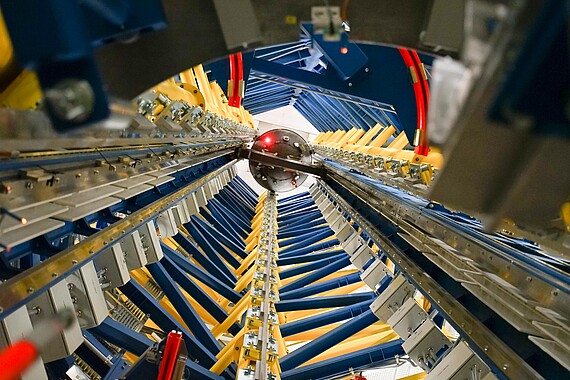
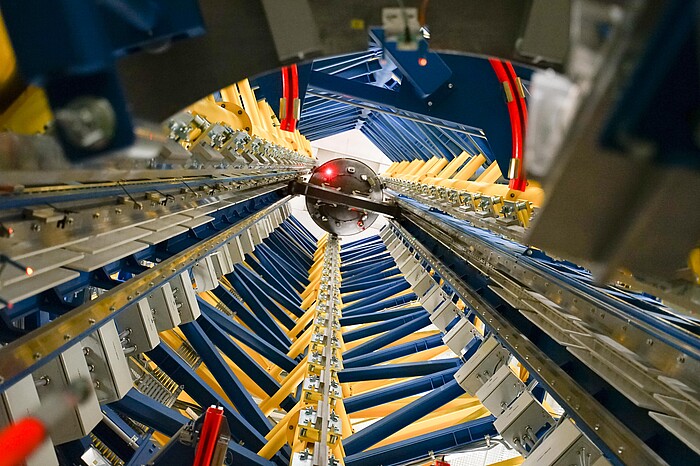
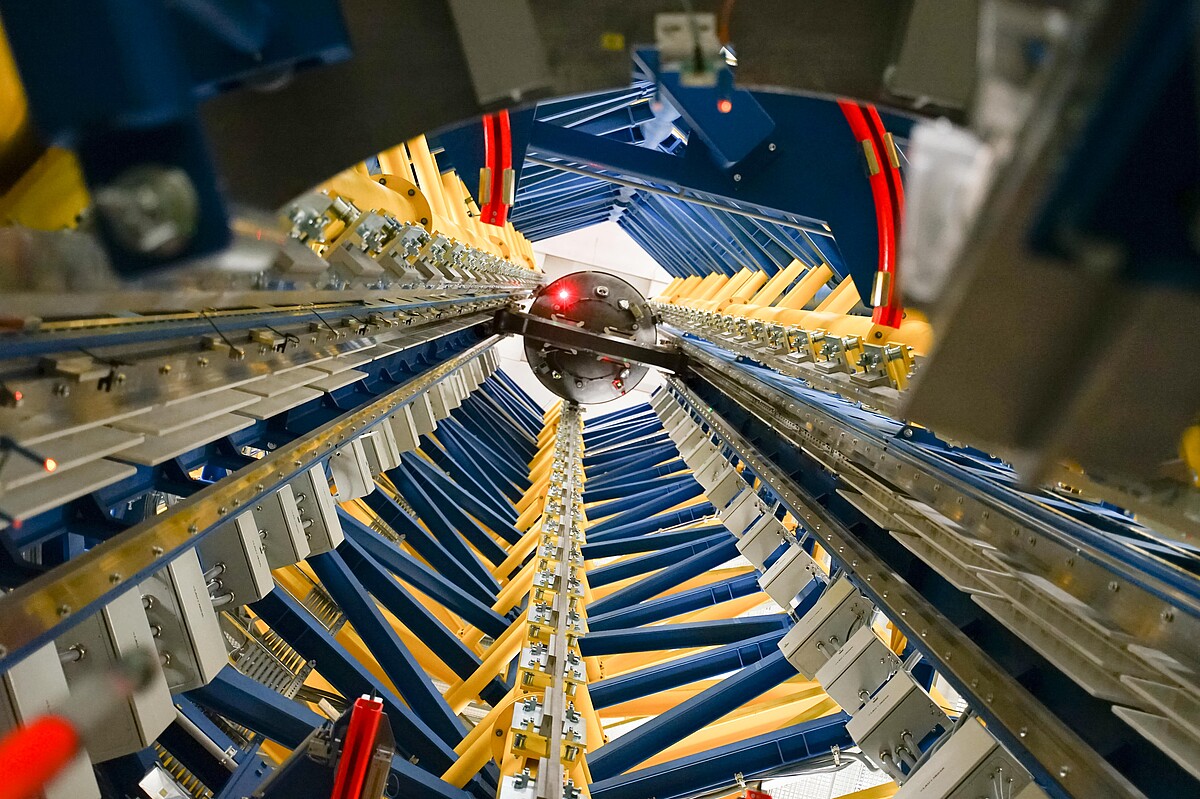
Look up: Gondola during the parabolic flight in the upper reversal point. (CC-BY 3.0 DE, LUH, Marie-Luise Kolb)
Pre-studies and first limitations of atom interferometric measurements were published by our collaborators Holger Müller (UC Berkeley) [1,2] and Sheng-wey Chiow as well as Nan Yu (NASA JPL) [2,3].
A significant rise in sensitivity can be reached with atom interferometers using free-falling, compact low-energy wave packages, called Bose-Einstein condensates, in interaction with a specific test mass on macroscopic time scales of several seconds. To reach these time scales the apparatus needs to be operated in microgravity. The Einstein-Elevator in Hannover is a promising platform for this purpose because its high repetition rate offers systematic studies. Such a proposal was recently published [3] and is the starting point for the experimental realization in the DESIRE project. Therefore, the BEC interferometer utilized for the MAIUS-1 mission [4,5] can be modified for the Einstein-Elevator. It will be combined with a specific test mass designed at the JPL.
The planned studies will use methods on the frontier of scientific work like delta-kick collimation or the controlled transport of the atomic ensemble over several centimetres. Finally, several measurements searching for sources of dark energy are planned. At the same time, they path the way for further studies in space.
[1] Paul Hamilton et al. “Atom-interferometry constraints on dark energy” In: Science 349 , 849-851 (2015). url: https://doi.org/10.1126/science.aaa8883
[2] Sheng-wey Chiow und Jason Williams and Nan Yu und Holger Müller „Gravity-gradient suppression in spaceborne atomic tests of the equivalence principle” In: Phys. Rev. A 95, 021603 (2017). url: https://link.aps.org/doi/10.1103/PhysRevA.95.021603
[3] Sheng-wey Chiow and Nan Yu. "Multiloop atom interferometer measurements of chameleon dark energy in microgravity” In: Physical Review D 97 , 044043 (2018). url: https://link.aps.org/doi/10.1103/PhysRevD.97.044043
[4] Dennis Becker et al. "Space-borne Bose-Einstein condensation for precision interferometry” In: Nature 562, 391 (2018). url: https://www.nature.com/articles/s41586-018-0605-1
[5] Maike D. Lachmann et al. "Ultracold atom interferometry in space" In Nature commications 12,
1317 (2021). url: doi.org/10.1038/s41467-021-21628-z


